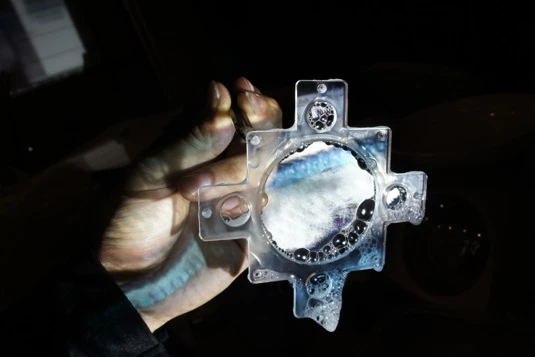If you ever thought of soap bubbles as small floating movie capsules, you were not alone in your observation. Researchers at the University of Tokyo have developed a system that uses such bubbles as kind of projection screen based on colloidal liquids. The bubbles are made of a thin film, and allow light to create a reflection on one section before passing through other sections. If the reflection can be controlled, then the bubble can be used as a display.
At the core of the ingenuity at work here is the use of ultrasound to manipulate the way the surface of these bubbles work. The membrane screen is controlled using ultrasonic vibrations, which are played out of speakers and can change the membrane’s transparency and texture depending on the scale of the sound.
A machine makes the membranes automatically. With the aid of the projector and ultrasonic speakers, the system alters the appearance of these membranes by controlling their color, transparency and BRDF (Bidirectional Reflectance Distribution Function).
The combination of the ultrasonic waves and ultra thin membranes greatly improves the quality of the projection, creating more realistic, distinctive, and vivid images on screen, the researchers said. “This system contributes to open up a new path for display engineering with sharp imageries, transparency, BRDF and flexibility,” said lead researcher Yoichi Ochiai.
The ingredients of the bubble the Japanese researchers have created include sugar, glycerin, soap, surfactant, water and milk. These result in a resistant colloid bubble that cannot be easily popped. For that reason, even solid objects can pass through it without bursting it. What’s more, by combining more than one screen, it is possible to create a kind of 3D or holographic effect.
The research team says the screen could be useful for visual artists looking for an extra layer of realism for their film projections as well as museums, which increasingly rely on multi-media visual displays to lure the public. We can also envisage them as props in dance clubs and even as part of the apparatus of avant-garde video shows.
In the video below, the Japanese researchers give details of the colloidal display.
Source: Yoichi Ochiai





